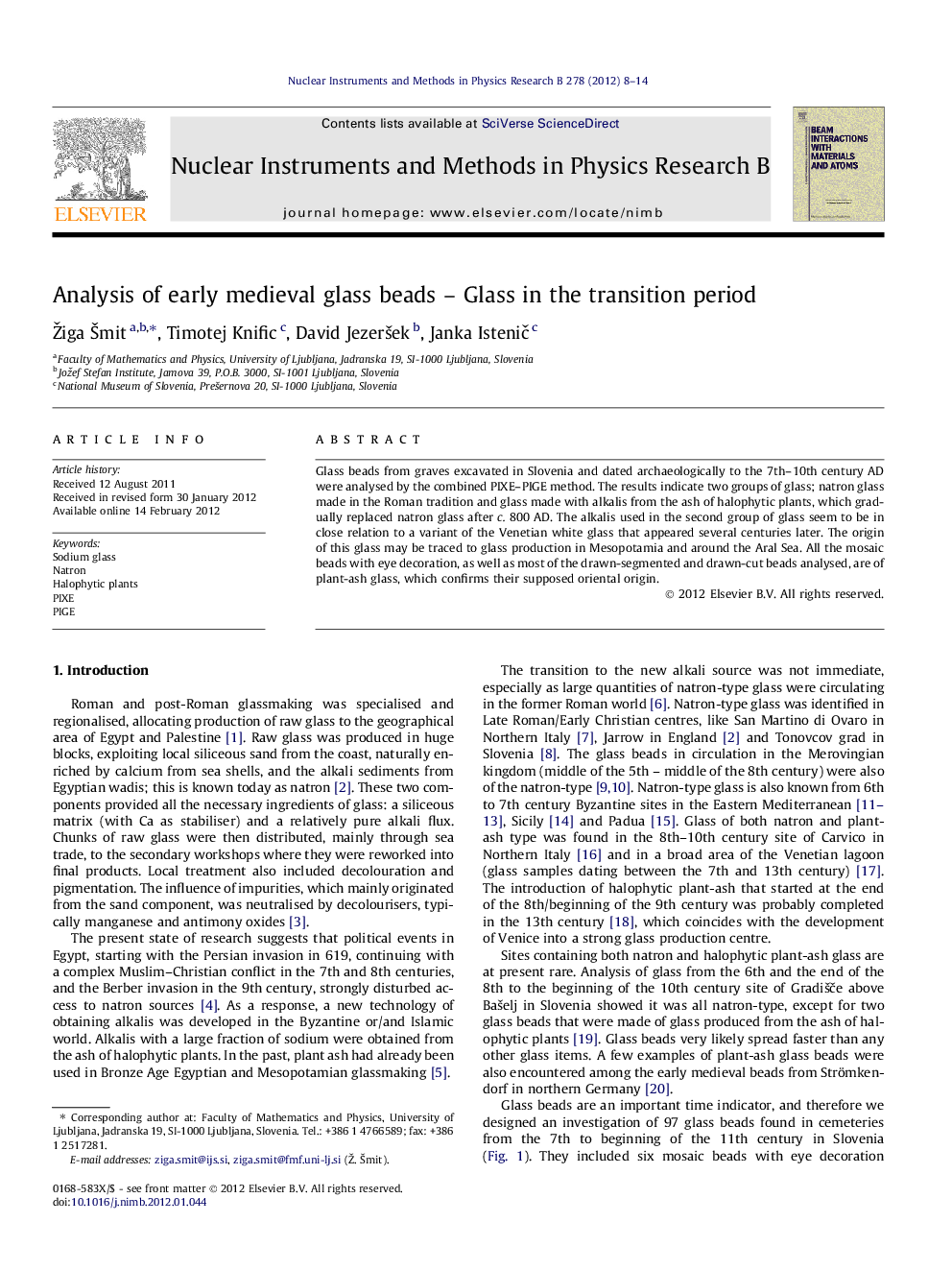| Article ID | Journal | Published Year | Pages | File Type |
|---|---|---|---|---|
| 1685450 | Nuclear Instruments and Methods in Physics Research Section B: Beam Interactions with Materials and Atoms | 2012 | 7 Pages |
Glass beads from graves excavated in Slovenia and dated archaeologically to the 7th–10th century AD were analysed by the combined PIXE–PIGE method. The results indicate two groups of glass; natron glass made in the Roman tradition and glass made with alkalis from the ash of halophytic plants, which gradually replaced natron glass after c. 800 AD. The alkalis used in the second group of glass seem to be in close relation to a variant of the Venetian white glass that appeared several centuries later. The origin of this glass may be traced to glass production in Mesopotamia and around the Aral Sea. All the mosaic beads with eye decoration, as well as most of the drawn-segmented and drawn-cut beads analysed, are of plant-ash glass, which confirms their supposed oriental origin.
